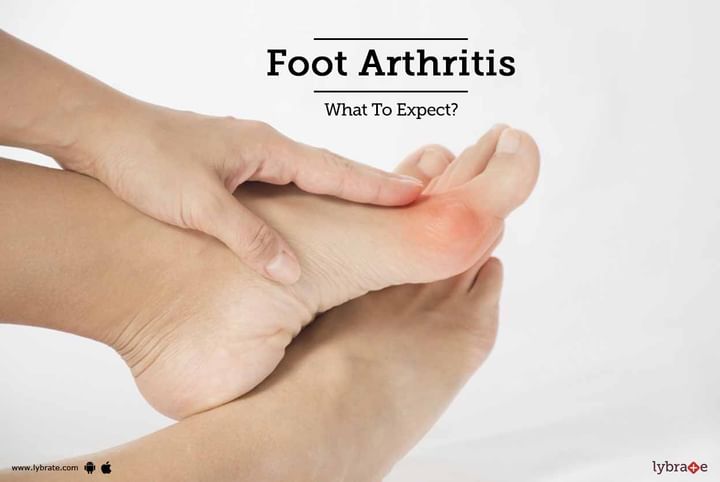Foot Arthritis - What To Expect?
With age comes numerous health complications. Arthritis is one such complication that affects many people, especially, in their old age. However, it will be wrong to generalize, for arthritis can, and have affected many young people as well. Arthritis of the foot can be equally unpleasant. In this type of arthritis, the joints of the foot are affected. The feet bear the whole weight of the body. Thus, with time, or an injury can damage and breakdown the joint cartilages. As a result, a person will experience pain and difficulty in walking.
As already known, there are 28 bones and as many as 33 joints present in each foot. In foot arthritis, the soft tissue (synovium) that lines these joints in the foot gets inflamed. Though arthritis can occur in any of the joints, the foot joints mostly affected include
- The first metatarsophalangeal joint (The great toe).
- The metatarsocuneiform joint (midfoot).
- The tibiotalar joint (ankle).
- The subtalar or talocalcaneal joint, the calcaneocuboid joint, and the talonavicular joint (hindfoot).
Symptoms of Foot Arthritis:
As seen in most types of arthritis, a person with foot arthritis may experience
- Moderate to excruciating pain in the feet.
- Tenderness.
- Stiffness and swelling in the joints.
- Difficulty in walking and moving (i.e. the movement gets restricted).
Types of Foot Arthritis:
- Osteoarthritis: In foot osteoarthritis, there is a breakdown (or damage) of the joint cartilage due to continuous wear and tear.
- Post-traumatic arthritis: The trigger for post-traumatic arthritis may be a foot injury (recently or in the past) like fracture or sprain, ligament tear.
- Rheumatoid arthritis: It is an autoimmune condition where a person's own immune system attacks and damages the cartilage, resulting in inflammation of the synovium.
- Gout Foot: In this type of arthritis, there is an accumulation of uric acid crystals in the foot joints. The Gout Foot is a painful and uncomfortable condition that can completely disable a person.
Diagnosis and Treatment:
Do not neglect any pain or swelling in the feet. A timely diagnosis will make the treatment effective. Foot arthritis can be diagnosed by
- Physical examination.
- X-ray of the affected area and joint.
- Imaging tests like the CT scan and MRI can also help diagnose foot arthritis.
Treatment for foot arthritis may be time taking. Depending on the severity, doctors may suggest surgical or non-surgical treatments. The various non-surgical treatments include
- Corticosteroids go a long way in reducing the inflammation. Thus, patients with foot arthritis are given corticosteroid injections in the joints.
- NSAIDs (Nonsteroidal Anti-Inflammatory Drugs), as well as analgesics, provide great relief from swelling and pain.
- Braces may be used to support to the inflamed joint(s).
- In foot arthritis, wearing the right footwear is important. Custom-made shoes, arch supports, shoe supports, and pads can also help improve the condition.
If the non-surgical treatments fail to produce the desired result, doctors may opt for surgical treatments like
- Joint replacement surgery
- Fusion surgery: Here, the bones are fused together using plates, rods, screws.
In addition to the above treatments, a person will need
- Physiotherapy and exercises (as advised by the doctor or physiotherapist).
- Maintain a healthy body weight and eat a healthy, balanced diet.
- Women should not wear heel shoes.
In case you have a concern or query you can always consult an expert & get answers to your questions!



+1.svg)
